In this essay, Amber Huff and Nathan Oxley reflect on questions that have emerged through Natures, the STEPS Centre’s theme throughout 2020.
Dear Reader,
I hope that this essay finds you well in these turbulent times.
When we last reached out in this format nearly one year ago, at the beginning of 2020, it was with a reflection on stories about Nature – or rather, Natures. Particularly, how the dominant imagery, language and stories told about crises of nature, alternatives, and possible futures – even those that are contrary to evidence around us – appear to be transcendent, beyond politics, the only stories that make sense in a world that increasingly does not from a subjective standpoint.
How do these stories affect us, and where are we in them? How might the stories we tell about these things change if they were emerging from different histories, at greater distance to power and authority? What understandings, tools and pathways become visible when history, contestation and context are the most important parts of the story; when we open up to view plural natures and plural futures as sites of struggle and possibility?
The coronavirus pandemic has provided an opportunity to reflect on these questions in a way that we had not anticipated: in the words of Bhaskar, to “reflect for a moment on the world as we know it”. Sometime in early March, we realized things were going wrong and we forgot about those stories for a little while. That was when we heard the first ‘zombie apocalypse’ joke, got news of the first travel bans, heard the first conspiracy theories. There was, of course, a good deal of xenophobia and racism. Gallows humor, over-caution, ‘post-truth’, business as usual… but of course it wasn’t. Nature was back, where it didn’t seem to belong, entering us from the outside, burrowing right into our cells before bursting out again, riding our breath like microscopic jockeys racing for the Cheltenham Gold Cup.
It wasn’t long before the takes started flooding in. Could ‘lockdown’ give us a fresh, hopeful outlook on life? Dolphins and swans in the canals of Venice! Elephants steal booze, take over town, have party! Urban foxes free to lounge in deserted London streets. The Welsh ‘goats’ town’ of Llandudno. Pop Malthusianism, deep ecology. Was Nature taking its revenge? Breaking through to disrupt civilization? Healing itself of a parasitic infection? As if human and non-human natures in the so-called ‘Anthropocene’ aren’t already intertwined, unruly and uncertain.
Through crisis
Early on it seemed there were mostly just our little stories, trying to get by and to make sense of the atmosphere and reality of what was going on. Understandings were fragmentary, questions multiplied. Where did this come from? What is the crisis? Is it the virus? The disease? The health system? Neoliberalism? The wildlife trade? Is it Nature itself? Is it in the uncertainty of the liminal space of lockdown? Is it in your flat, in your massive cupboard full of apocalypse-ready toilet roll and tomato puree? Is it in your bare cupboards, after your workplace got shuttered?
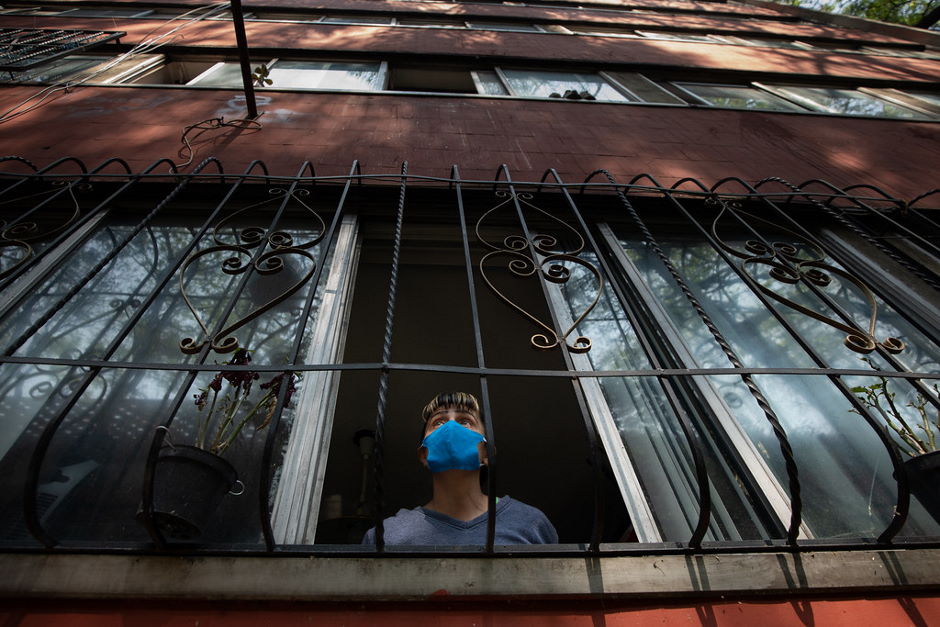
Maybe it’s in all those and other things, and in the blind spots, the nasty cracks in the plaster that the pandemic caused exposed. Inequities, years, decades, and centuries in the making: hollowed-out health systems, the precarity of jobs, shelter that turns on a missed payment. And what’s this out there? Super-cyclones and climate-altering wildfires? Re-education camps in Xinjiang, forced sterilization in the US? Histories of violence, the violence of everyday life. Is this natural?
We have all experienced the pandemic, but in vastly different ways. For many people in the UK, the pandemic has materialized a sense of alienation and isolation from society and the outside world that was already there. People already suffering due to socioeconomic inequalities have fared the worst in terms of anxiety, panic, hopelessness, and loneliness, not to mention hunger, loss of housing and risk of infection and early death. The pandemic is exacerbating existing inequities and structural violence, and these effects won’t simply go away with a vaccine.
This makes us wary of calls for a ‘Great Reset’ and to ‘build back better’ that reimagine the world as a corporation in need of a strategic reshuffle. If the crisis-laden 21st century has taught us anything so far, it is that the ‘reconstruction’, what comes after, ‘disaster capitalism’, is often worse for society and nature than the effects of the disaster itself: the rush to roll back environmental rules, worker protections and support for social care, the privatization and enclosure of public goods and services, ‘greenwashing’. All this against the backdrop of closing of space for democratic debate, efforts to criminalize non-violent dissent and increasingly violent police action against protesters.
What stage of dystopia is this? pic.twitter.com/0zwmWDn9q7
— Brian Kahn (@blkahn) November 18, 2020
There’s no going back, but there’s a feeling of continuity too. After all, as this crisis gets bigger, stretches time, its urgency grows and fades, it starts to feel normal. Its story becomes folded in, part of the big, cascading and conjunctural crises of politics, economy, of ecology, of climate, of care. It’s here and it’s just around the corner; it’s now and we only have 10 years. As ‘crisis’ gets bigger, ever more differentiated but more tightly bound, it can get easier to try to make sense of things through the lens of big ideas, grand challenges to ‘tackle’; 30-year, 50-year, 100-year models.
After all, we’re not the experts – our senses betray us. How can we make sense of a thing if we can’t even see it?
‘Hyperobjects’ is what philosopher Timothy Morton calls things like global warming, inequality, the pandemic. In thinking about how we experience global crises, this can be a good concept to think with. Hyperobjects are ‘things’ that are formed by relations among other things, creating new things and that are so vast, complicated and distributed in time and space that we cannot see them or touch them directly as ‘objects’ but rather experience them by looking for their effects and their ‘footprints’ in data patterns, models and discourses.
In the face of this vastness, the planetary viewpoint takes on a certain appeal. The planetary contains the bigness. The Earth seen from space: a deceptively smooth, round sphere, a pale blue dot glowing in the darkness. The talk becomes not of people but of ‘population’, not of animals or fish or bugs but of ‘biodiversity’, not of forests but of ‘carbon’, the Earth is no longer where your feet are, where you’re immersed, but a spaceship.
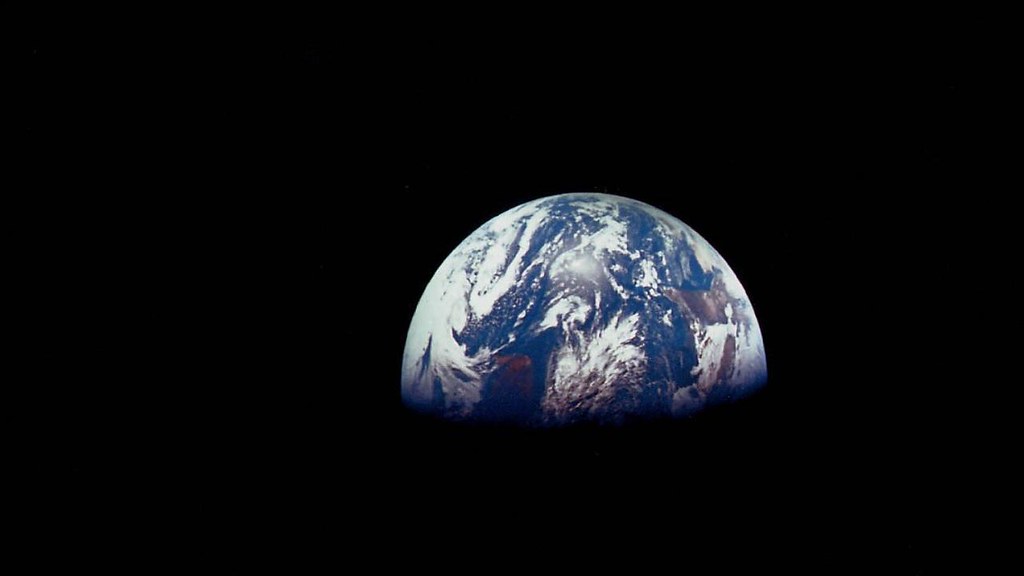
The problem with ‘planetary thinking’ and taking the ‘eagle’s eye’ view is that the mountains and valleys are all smoothed out; the kaleidoscope of perspectives and pathways and conflicts and encounters is narrowed to a single dot. Humanity is the reference point. History is a graph of rising temperature. The future is a scenario, possibilities are reduced to a range of numbers on a spreadsheet. The future is locked in as a choice between apocalypse or salvation. How did we get here? Where is our agency? Where is power in this virtual reality? How to step back from this false choice?
Against disenchantment
In the early 20th century, sociologist Max Weber used the word ‘disenchantment’ to describe the effects of a culture of rationalization on society in which meanings, beliefs and values became subordinated to quantification and bureaucratic management for the sake of efficiency and control. Extending Weber’s ideas, Max Horkheimer and Theodor Adorno, seeing disenchantment as domination, saw the Enlightenment as an ongoing historical project in which ‘man’, through the application of knowledge and the technical domination of external nature, underwritten by a positivist epistemology, takes ‘his’ seat as master of the earth.
This worldview rests on the conceptual separation of ‘humanity’ from a nature that is fully knowable, predictable and manageable, not at all mysterious. People have been socialized to see non-human elements of nature as lacking a meaning beyond the usefulness of their material form and economic value. The unseen and intangible things become hidden, subordinated.
Of course, as Adorno acknowledged, the process of disenchantment is incomplete. Even so, capitalist modernity not only rests on relations of disenchantment and domination, but it enchants us in turn with its own fables – using them in a productive politics that legitimizes dominant logics, forms of knowledge and associated institutions. As if by magic, history becomes destiny. A narrow pathway to ascendancy illuminated by Great Men, rationality driven by scientific knowledge, technology harnessing the forces of nature, transforming them: Promethean fire to fuel the engines of development. The taming of beasts, the slaying of dragons, stoking the boilers.
Masterplanet is Danish architect, Bjarke Ingels' plan to redesign Earth and stop climate change https://t.co/ZbXsxHhvcs via @dezeen
— Kirsty Lang (@bbckirstylang) October 30, 2020
The coloniality and violence of this pathway are obscured, de-centred, naturalised; different ways of being and knowing supressed, sacrificed, relegated to the shadows of the big story. This ordering seems rational, inevitable, as if arising through the workings of Nature itself.
If Enlightenment’s program has been the disenchantment of the world, then surely the story of the ‘Anthropocene’, the Age of Man, Anthropos, is a logical result. Now an everyday word, the ‘Anthropocene’ was proposed at the turn of the millennium as way of naming the idea that ‘humanity’ has become a geological force. The Anthropocene imagines a world-historical moment marking a new era that would baffle the paleontologists of future generations: humanity’s imprint on geology, the flows of plastics and detritus, billions of non-degradable fragments layering on to the sediments of the past, a great extinction.
The Anthropocene story is essentially a world-flattening story of conquest through industrial globalization. Its birth coincided with a revival of earlier environmentalist concerns about resource scarcity, neo-Malthusian limits and re-framings of ‘limits’ in the language of Earth systems science as breached ‘planetary boundaries’. Since then it’s evolved in popular discourse into a signifier of intersecting and planetary-scale human-made crises that threaten earthly survival itself. Contested, ambivalent and for the most part depoliticized, debates on what comes ‘after’ reflect a range of imagined futures, from ‘blood and soil’ eco-nationalist and eco-fascist to darkly dystopian to post-apocalyptic to eco-modernist and accelerationist visions of blindly techno-utopian “progress, salvation and solutionist mastery”.
But these takes leave important questions unexamined: what does the idea of the Anthropocene do in the world of possibilities? Who are ‘we’, the planet-destroyers? Who are ‘we’, this Anthropos, this conquering force?
The ideological power of stories that start with the by-products, symptoms, side-effects and models of coming catastrophe, is that they disembed what we have been calling ‘crises’ from their material and social origins and contradictions. Feminist, queer, critical race and decolonial scholars direct attention to the one-sidedness of the normative debates around Anthropocene crises: they ask who has and has not been invited into spaces of knowledge production; and they highlight the resulting ‘epistemological blindness’ of ongoing dialogue around the Anthropocene’s conceptualization and definition in geology, ecology, Earth systems science, environmentalism, and environmental history. For example, as Kathryn Yusoff writes, if the Anthropocene discourse that has emerged as a sudden concern of people worried by exposure to environmental harm, it does so “in the wake of histories in which these harms have been knowingly exported to black and brown communities under the rubric of civilization, progress, modernization, and capitalism”.
One could imagine that, sensorially, living in the Anthropocene, particularly for relatively privileged people, feels like life in a world of hyperobjects. For Morton, concepts like the hyperobject can give people a better grasp of what is happening around them and motivate action. “If you can understand global warming,” he says, “you have to do something about it.” But this seems like an over-simplistic take – a continuation of the positivist program that can’t grapple with the emergent character of these phenomena. It’s the idea that if something can be named, abstracted, and measured it can somehow be mastered, tackled or brought to heel. It is fantasy and fairy logic, a story in which speaking the true name of the god or monster gives one the power to control it.
Does the way, then, lie in giving over more control? Striking that global consensus? More bureaucratization to tighten the reins on an unruly nature and an uncertain future? A benevolent authoritarianism, global ‘stewardship’ to manage a finite ‘planetary budget’, keep the system in place at all costs, keep the economy chugging along and do the (green)washing-up? These sorts of concerns are already facilitating ‘new’ waves of enclosure through the large-scale expropriation of agrarian lands and natural resources worldwide in the name of managing ‘scarcity’, ‘efficient’ extraction, ‘green’ commodity production, and the management, mitigation, restoration and conservation of nature. These are linked through processes of globalization to past and ongoing struggles against the enclosure of diverse commons that involve not only land and forests but urban spaces, knowledge, cultural heritage and biological life being treated as ‘intellectual property’.
Decoupling, finance, surveillance, accounting, control. The metrics themselves become the goals. Last month, Prince Charles underlined the ‘last hour’ of the climate crisis, calling for “a new Marshall-like plan for nature, people and planet, led by the private sector”. Crisis is ‘green’ – a new restoration economy, ushering in new growth markets for the ‘repair’ and remaking of ‘nature’. In September, a Financial Times headline called for “a new asset class of healthy soils and pollinators”. Water futures joined gold, oil and other commodities traded on Wall Street. Online algorithms filter ‘truth’. Hashtag nature. In this story, the nature we value, the nature of the future, the only nature that can save us, is Nature economicus, a depoliticized, pacified, privatized, one-dimensional, pliable, and rationalized nature ruled by managers and actuaries.
Towards radical ecologies
This world is exhausting. Structural and epistemic violence, bureaucratic control, unending crises, and the disenchantment of what Mark Fisher called ‘capitalist realism’, don’t just warp the ways we experience the world, but can warp and shatter the imagination, foreclosing on possibilities. Silvia Federici talks about disenchantment as constructing ‘a world in which our capacity to recognize the existence of a logic other than that of capitalist development is every day more in question’, a world where all around are enclosures, fences, property, stifling our ability to imagine different ways of being in the world, subjugating values to market value and foreclosing on possibilities and alternative futures.
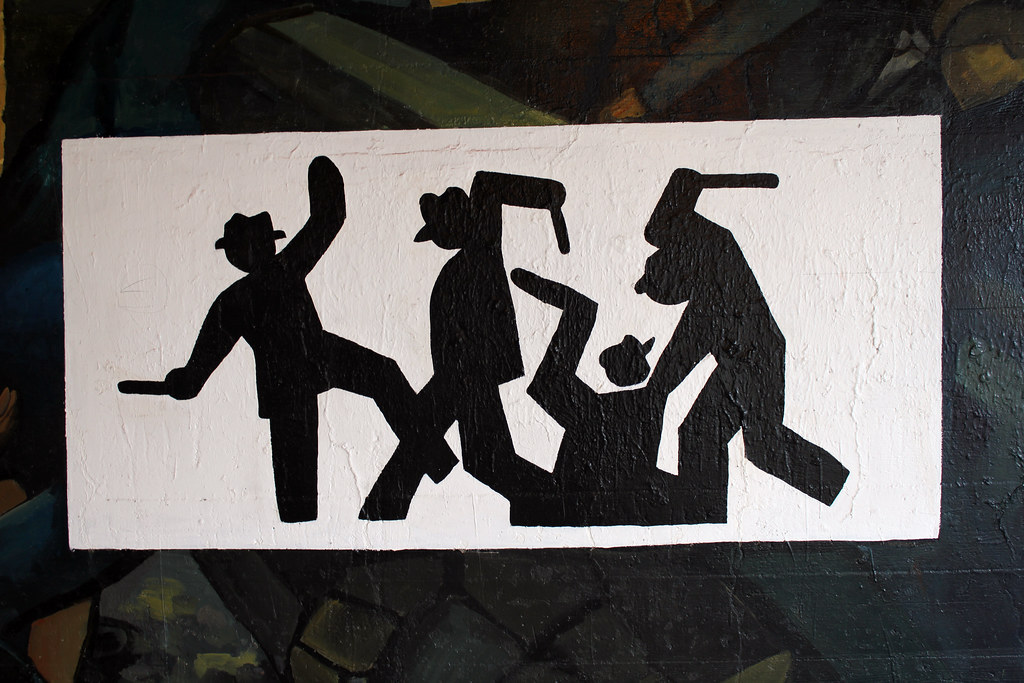
So where do we go from here? Where do we find ‘truth’? Justin Hoseby and J.T. Roane propose that we need to look to radically “alternative epistemic entryways” for both historicizing and disrupting overlapping ecological, social and political crises.
The social and natural sciences can provide important knowledge tools, but at the same time the reification of disciplinary boundaries does more than define fields: it encloses access to knowledge and means of producing it to the few, puts knowledge into silos and reinforces the sorts of polarization and epistemic baggage that limit thinking beyond a conservative and bounded ‘scope’. This can create false distinctions between questions about knowledge, values, ethics and action. We have been taught to believe that ‘Science’ is ‘neutral’, premised on distancing itself from messy things like values and politics, but this stance is itself political.
Doing better science or better research more broadly requires that we break down bounded and limiting ways of thinking – not just about research problems – but about what and whose knowledge is legitimate, abolishing the idea that scientific knowledge is somehow ‘neutral’ in the face of moral and political questions and value struggles. The truth is that facts and frameworks reflect the worldviews and truths of their creators: the values they prioritize, the unquestioned assumptions they reproduce, the explanatory theories they choose to use and the outcomes they envision.
As the pandemic joins the list of intractable, systemic, asymmetrical, global disruptions of the Anthropocene, opening up radical and critical approaches to ecological thinking can help us better grapple with the challenges we face, and nurture the forms of connection, solidarity, care and justice that we desperately need. ‘Radical’, as we use the term, comes from the Latin for ‘root’, implying approaches to knowledge and practice that seek to dig deeply, unearth underexplored dynamics or develop modes of critique and response that get to the ‘roots’ of a problem.
‘Ecology’ has dual significance here, in describing worldly webs of relations in nature, as well as ways of knowing them. Like ‘nature’ itself, ecologies in both senses are emergent, contested and plural, constantly changing and co-produced by people and not-people, enmeshing webs of places, relations and interactions – historical, biological and socio-political, from the molecular and micro-cellular to the planetary scale. ‘Radical ecologies’ take diverse forms, but what they have in common is that they are critical, relational, historical, plural and politicizing.
What becomes visible and accountable if we de-center familiar ways of knowing and framing, and rather re-center and re-situate marginalized stories, emplaced and embodied experiences, understandings and histories? Sango Mahanty and colleagues build on Christian Lund’s suggestion of looking to ‘ruptures’ to reveal hidden dynamics and potentialities, as generative ‘open moments’ of transformative potential that are ripe with uncertainty, “when opportunities and risks multiply, when the scope of outcomes widens, and when new structural scaffolding is erected”. Ruptures, as research in critical geography shows, expose and lay bare (if we are willing to look), in different ways, in different places, at different scales, contradictions in dominant assumptions about society, nature, and the workings of institutions, which can raise new questions about agency, contestation, nature and society in a changing and changed world.
Rather than defaulting to the ‘planetary’, situating elements of ‘crisis’ and ‘rupture’ in politics and ecologies of place allows us to dig deeply to get an intimate, rooted ‘worm’s eye’ perspective of how interpersonal, institutional and interspecies encounters, negotiations, alliances, resistances and disruptions build and transform worlds. These worlds and encounters include the myriad crisis ecologies of the current juncture, but also struggles for emergent emancipatory ecologies that are often hidden by the shadows cast by crisis. Building on Plumwood’s conceptualization of ‘shadow places’, a radical ecological orientation also requires what we might call the lateral or ‘spider’s eye view’, attuned to the ways that ‘place’ and struggle are constituted through power relations and solidarities involved in and arising from political ecological entanglements of globalization that weave far beyond emplaced dynamics of ‘local’ geographies. What patterns emerge? Whose dwelling place is made better, whose is sacrificed, and how are these relations co-produced yet obscured from accountability?
Critical tools, dialogue and insights from the arts and humanities, our folk traditions, our radical traditions – literature, philosophy, social theory – often excluded from in formal disciplinary spaces, can further help us to understand the multidimensionality and dynamism of what we have been calling ‘crises’. They allow us to better explore, make sense of the forms of bodily, material and social alienation and fears (of the known and unknown) that people experience in contemporary society, and in turn open up ways of thinking about how we got here and how to live and struggle in a differentiated, violent and unequal world. They can help us become comfortable thinking about a reality that isn’t fully constructed nor fully known and knowable.
This can include popular culture as well, of course. People – writers and readers and viewers – have long turned to conventions of ‘genre’ or ‘speculative’ fiction as means of both sense-making and expressing their sense of being in a changing or changed world: of asking about the nature of nature, and of exploring what sorts of futures might arise from different real or imagined social, ecological and political junctures.
20th Century science fiction writing and film captured and explored Cold War anxieties, imagined both techno-utopian futures and life after a nuclear holocaust, and gave us the neon-lit techno-noir corporate dystopia of cyberpunk. But the early 21st Century has been particularly taken with visions of civilizational collapse as nature ‘bites back’; secular eschatology associated with ‘resource wars’ and the eco-, climate, viral and zombie apocalypse; the radical pessimism of young adult authoritarian dystopia; as well as the rising prominence of Afro-, black, queer and indigenous futurisms and the renaissance of ‘the Weird’ in recent years.
Concepts such as the ‘surreal’, the ‘eerie’, the ‘strange’, and particularly, ‘the Weird’ resonate with recent popular culture as well as efforts in the environmental humanities, eco-criticism and philosophy, and they likewise offer much to ‘think with’ in efforts to unmask ‘hidden’ dimensions and obscured relations of ecology and the politics of nature.
Into the Weird
In visual art, film and fiction, ‘the Weird’ is distinguished by an uncanny aesthetic and a sensation of disorientation and hesitation that comes from the differences between two or more worlds – in an ontological sense – becoming entangled in the same space. The Weird is a portal, a gateway, a veil. In Lovecraftian ‘cosmic horror’ the Weird often comes with a shattering of perceived reality, leaving the main character traumatized or driven mad as they come face to face with the “‘hidden and fathomless worlds’ completely autonomous from the mundane one we take for granted”.
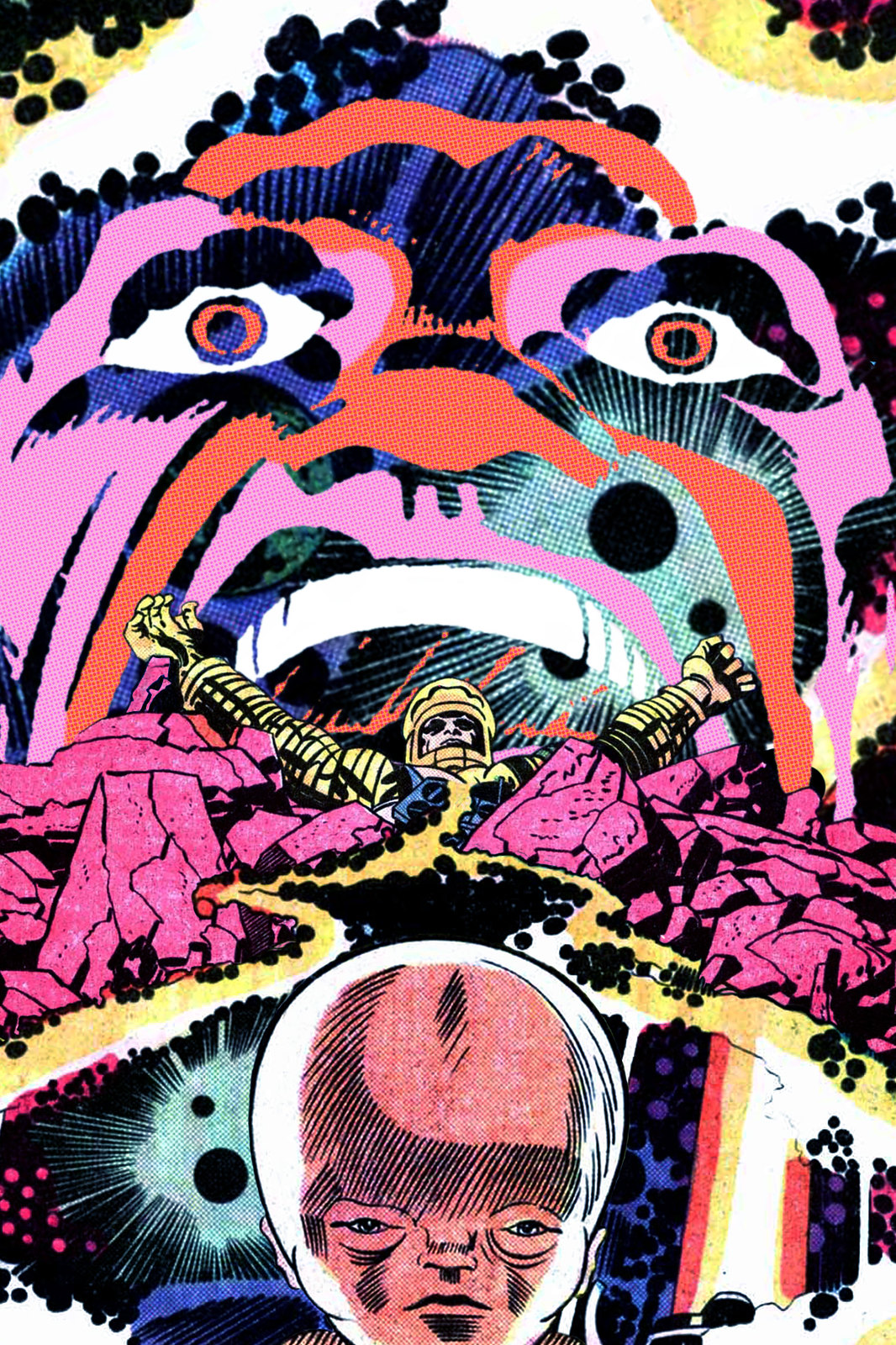
The particular resonance and value of the Weird, compared to other speculative or fantastical genres, might lie with the fact that the Weird presents and engages deeply with a specific epistemological crisis. Mark Fisher explains that the arrival of ‘the Weird’ acts as “a signal that the concepts and frameworks which we have previously deployed are now obsolete” to understand reality. To convey this rupture, the Weird is often expressed through narratively rich landscapes and imaginative ecologies that transgress our expectations of causality. They play on (and with) scientific taxonomies and assumed hierarchical ‘orderings’, and they disrupt commonsense differences between biological taxa, states of matter, human and ‘other’. In subverting binaries, biological essentialism and ideas about fundamental hierarchies, the ecologies of the Weird and the queer have close affinities.
Does this feel familiar? A distinctive feature of the way the crisis-laden Anthropocene is experienced is in the ways that the contradictions and spatialities of globalization have even begun to afflict the privileged and comfortable. They have disrupted and transformed not only landscapes, livelihoods and life-worlds of peoples who have struggled against colonization, enslavement, dispossession, misogyny and caste- and class-based exploitation, but also the comfortable sense of control, of mastery, of anthropocentric exceptionalism, conveyed in the bedtime stories of positivist ontology and capitalist modernity. Many have become incapable “of believing in the innocence of the sensual world that surrounds us”.
This troubles distinctions between the real and the virtual; the actor, the action and the acted-upon; certainty and the margin of error, causing disorientation, anxiety, as well as a sense of urgency juxtaposed with a feeling of impotence. The contradictions were always there, but increasingly, ordinary rational ways of perceiving time, space, ecology, causality, and agency have been upset, confounding conventional scientific and control-based approaches. The shadows creep in. Something is seeping through the cracks. The problems are wicked, the shadows are terrifying, and the future seems bleak. The world itself has become weird.
Thinking with the Weird and its ecologies and epistemic dilemmas can not only help us to grapple with the strangeness and deep disconnection many people endure in society; it can also help us learn to tell new stories that de-centre the ‘Anthropos’ and, perhaps, seek a sense of re-enchantment in the world. This is not the sort of ‘re-enchantment of nature’ that Deep Ecologists like to talk about, which too often rests on a misanthropic romanticism, culturally appropriated mysticisms, and essentialist notions of ‘primitive’ versus ‘modern’ relationships between humans and the non-human world. In contrast, ecologies of the Weird have a way of not erasing, but de-centering the human subject in a narrative by unsettling the perceived boundaries between the human, the natural and sometimes even the technological and supernatural, and by opening a broadened sense of possible realities in the cosmos. In other words, both the horror and enchantment of the Weird comes from upsetting the sense of confidence in a known and predictable universe.
In the Weird narrative, de-centering the rational human subject allows reality or truth to be revealed through noticings and encounters that are usually hidden from the perceptions and expectations of a dominating anthropocentric worldview. This can be horrific, but also ambiguous. It can lead, as in Butler’s Xenogenesis trilogy, to radical revelations and the forging of new kinships, cultivation of new socio-natures and even exploring new ways of imagining what a person or even ‘humanity’ must be to get along in a fundamentally changed reality. It resonates with what Donna Haraway calls ‘tentacular’ thinking: an outlook that abolishes the ‘rational’ and makes ‘…human exceptionalism and bounded individualism, those old saws of Western philosophy and political economics, become unthinkable’. It’s a re-enchantment that helps us to orient ourselves in a newly unmasked reality, the bigness and pluripotentiality of which surpasses our abilities to directly observe, experience and fully know it. In this reality, what we see doesn’t define and bound the universe, but it’s an entry-point to exploring its mysteries and possibilities.
The truth is, we know that there are other, less socially violent and less ecocidal pathways than those offered by dominant value relations and the prevailing pathologies of power. At the current juncture, radical ecological thinking is important to the way we understand and act in relation to the past, present and future. Blindness to the coloniality, the logics of conquest and mastery, that underlie the Anthropocene story has a normalizing and naturalizing effect: it obscures our ability to recognize that these crisis relations are rooted in and are reproduced through political choices, social institutions and power relations. Radical ecologies can help us better make sense of the weirdness of the current juncture, the warped spatialities and temporalities of globalization; the fact that we are already confronted with the injustices of ‘climate colonialism’, ‘vaccine nationalism’, the proliferation of new apartheid ecologies and the growing nexus force of militarization, nature conservation and ‘green’ development.
In the context of the coronavirus pandemic, narratives around ‘tackling’ global warming, ‘repairing’ nature lead many comfortable people to fantasize about a return to ‘normalcy’ somewhere down the road. But there is no going back and there is no way to magically reset things to the ‘before-times’. The future is uncertain. Radical ecological thinking implies a giving-over to the unknown or the uncertain: acceptance of a changed and changing world, and the uncertainties and mysteries and challenges that it brings.
Confronted by these crises and confusions in nature and ourselves, we need to give up hope in the ‘silver bullet’. Instead, we need to use the space to embrace and re-imagine possible natures and possible futures: not as a false choice between apocalypse and techno-salvation, but as sites of uncertainty, unruliness and possibilities worth struggling for. This can open us up to not only an expanded sense of earthly solidarity, kinship and relationality, but also excite the radical imagination with an expanded sense of possibilities for what the cosmos might contain beyond our immediate ability to see it.
About the authors
Amber Huff is a research fellow at the Institute of Development Studies and convenor of the STEPS Centre’s ‘Natures’ theme. Nathan Oxley is the STEPS Centre’s communications manager.
 Nature is all around us, but there are many ways of seeing different kinds of ‘natures’, and many efforts to involve it in forms of control or domination.
Nature is all around us, but there are many ways of seeing different kinds of ‘natures’, and many efforts to involve it in forms of control or domination.
How is talk of crisis shaping nature and people’s views of it? How can colonial forms of knowledge, technology and power be challenged, and what might it mean to ‘decolonize’ the study of environmental change? What do alternatives look like, and how can we explore, nurture, imagine and live the relationships we might want for the future?
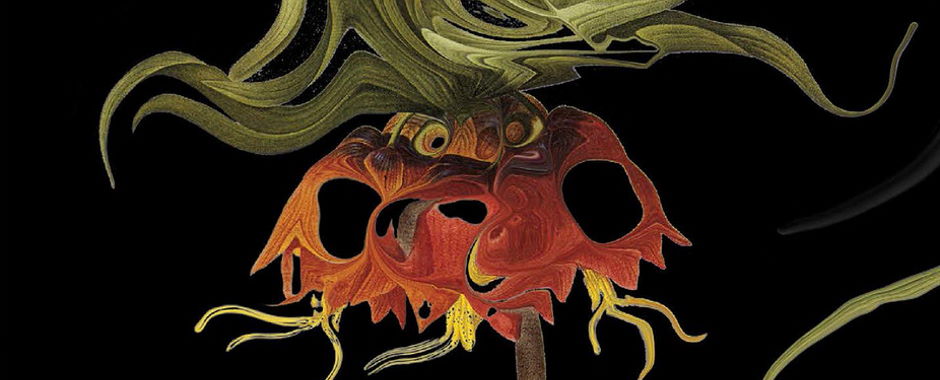
Wonderful piece! Summarizing 2020/21 well!